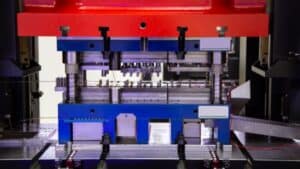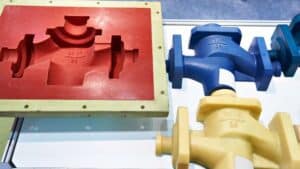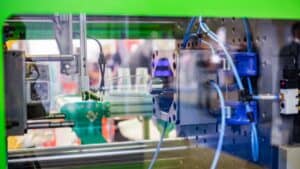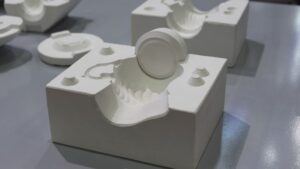Swiss machining is a precision manufacturing process that cuts small and complex parts from metal or plastic. It uses a special machine that holds the material tightly and moves the cutting blades very close to the point of work, allowing for high accuracy and complex shapes.
If you work with electronics, medical devices, or watch parts, you’ve likely encountered items made by such technique. The process helps create products that require smooth finishes and exact measurements, which might be hard to achieve with regular methods. Understanding how this method works can expand your vision in making small, precise components.
What Is Swiss Machining?
Swiss machining is a precise process used to make small, complex parts with tight tolerances. It involves swiss screw machines and techniques designed to handle delicate workpieces efficiently. Understanding its oringins and how it differs from regular machining will help you see why it’s chosen for certain projects.
The Origins of the Swiss-type Lathe
Swiss turning machine originated in the 19th century within Switzerland’s watchmaking industry. Watchmakers at machine shops required a method to manufacture tiny, highly precise screws and components for timepieces. Conventional lathes of that era couldn’t achieve the necessary precision without significant part deflection.
This need led to the invention of the sliding headstock lathe. A key innovation was the guide bushing, which supports the bar stock immediately adjacent to the cutting tool. This design minimizes vibration and material movement during machining, which guarantees unparalleled accuracy for small-diameter parts.
Modern CNC Swiss-type lathes now also incorporate live tooling, secondary spindles, Y-axis capabilities, and modern computing technologies to vastly expand their functionality beyond their original purpose.
How Swiss Machining Differs from Conventional Machining
In conventional machining, a workpiece is typically secured at one or both ends using a chuck and then rotated or moved past stationary cutting tools. This setup is suitable for manufacturing larger or less intricate components. However, when machining small or slender parts, this method can lead to bending, deflection, or vibrations during the cutting process, which may compromise precision and surface finish.
Swiss machining, on the other hand, is made for creating small, detailed, and highly accurate parts, often used in industries like medical devices, electronics, and watches. In a Swiss-type lathe, the workpiece is supported very close to the cutting tool, which reduces bending and vibration. This support allows for the use of tiny, precise tools and tighter tolerances. The machine also feeds material continuously, making it faster and more efficient for producing long, thin, or complex parts accurately.
Key Components of CNC Swiss Machines
A Modern CNC Swiss machine has several important components:
- Sliding Headstock: Moves the bar stock along the z-axis through the guide bushing, precisely controlling the feed rate and material position.
- Guide Bushing: Provides rigid support directly adjacent to the cutting area, which is the fundamental feature that eliminates deflection in slender workpieces.
- Multiple Tool Stations: Hold numerous cutting tools that operate on different part sections simultaneously, drastically reducing cycle times.
- Rotary Tools: Perform milling, drilling, and tapping operations off the main spindle axis, allowing for complete machining in a single setup.
- CNC Control System: Executes complex machining programs with micro-level accuracy, coordinating all axes and tool movements for intricate part geometries.
Each component works together to keep the workpiece steady and the tools exact, enabling high precision in your projects.
Applications of Swiss Machining
Swiss machining serves critical roles across multiple high-stakes sectors due to its ability to handle complex, small-scale high-precision parts. Its unique process supports industries requiring extreme accuracy, fine surface finishes, and the machining of difficult materials.
Medical Devices
Swiss machining is vital in creating high-precision medical devices like bone screws, dental implants, and surgical tools, which must meet strict safety and quality standards. It can handle biocompatible materials like titanium and stainless steel, ensuring parts are durable, sterile, and safe for use inside the body. The ability to produce smooth and accurate finishes plays a key role in supporting patient safety and improving healthcare.
Aerospace
The aerospace industry uses Swiss machining for critical parts like wing components, aircraft motors, and cockpit controls. These components require extreme precision, lightweight materials, and resistance to heat and pressure. By meeting tight tolerances and producing reliable components, Swiss machining ensures the safety and performance of flight systems used in both commercial and military aircraft.
Consumer Electronics
Swiss machining is crucial in producing tiny, precise parts for electronics, such as connectors, screws, and lens housings. These parts are used in devices like smartphones, wearables, and tablets, where miniaturization is key. The ability to create consistent parts in large volumes makes Swiss machining ideal for meeting the high demand of the tech industry, enabling the production of smaller, more powerful devices.
Automotive
In the automotive industry, Swiss machining is used to create components like brake pins, fuel-injection parts, bushings, and shafts. These parts must meet strict safety and quality standards to ensure vehicles operate reliably. Swiss machining supports both standard and high-performance systems, including components for electric and hybrid cars, making it essential for automotive innovation and safety.
Swiss Machining Process Steps
If you wish to have a general grasp of the process flow, this chapter will be hepful. The process is comprised of two parts, starting with preparing the right material and then moving into detailed cutting through turning and milling.
Material Preparation
Before beginning the process, you need to select the correct bar stock, usually made of metals like stainless steel, brass, or aluminum. The bar is cut to length and carefully loaded into the machine’s guide bushing.
The guide bushing supports the bar close to the cutting area, reducing deflection and vibration. It helps maintain a small margin of error, which is key for small parts.
You should check the bar’s surface and diameter for any defects because imperfections can affect the final product. Clean and straight bars improve accuracy.
Turning and Milling Operations
Instructions can be given by using the control panel and rotating the bar stock while the tools cut against it. This produces smooth, cylindrical shapes and detailed features like grooves or threads.
Milling happens with tools moving perpendicular or angled to the bar, cutting flat surfaces, slots, or complex contours. Turning and milling is often combined into one cycle without moving the part to keep precision high.
You must program carefully to sequence operations and use multiple tools. This reduces setup time and improves repeatability on small, complex parts.
Types of Swiss Machines
There are two main types of Swiss machines used in precision machining: those controlled by computers and those powered by mechanical cams. Each type serves different needs and offers unique advantages depending on your project’s complexity and volume.
CNC Swiss Lathes
CNC Swiss lathes use computer control to manage the cutting blades and workpiece movements precisely, which can be programmed to handle very complex shapes.
These machines allow you to change programs quickly, which saves time when switching between different part designs. CNC Swiss lathes are ideal for small, intricate parts made in medium to large quantities.
You will benefit from advanced features like multiple axis control, live tooling for milling, and automated processes that improve accuracy and repeatability. These machines often come with user-friendly software to help user create or modify programs efficiently.
Cam-Driven Swiss Machines
Cam-driven Swiss machines rely on mechanical cams to control tool movements. These cams are set up physically on the machine and drive the cutting action in a fixed sequence.
This type of machine works best when producing large volumes of simple, repetitive parts. Once the cams are set, you get fast cycle times and consistent output.
It should note that changing a cam setup takes more time than reprogramming a CNC machine. However, it tend to cost less upfront and require less technical knowledge to operate.
They are well suited for high-volume production runs where the part design stays the same over time.
Benefits of Swiss Machining
Swiss machining provides distinct benefits over conventional machining methods, primarily due to its unique design. These advantages make it indispensable for manufacturing small, intricate parts with exceptional accuracy and efficiency.
High Precision and Tight Tolerances
Swiss machining achieves exceptional accuracy by supporting the workpiece millimeters from the cutting zone with a guide bushing. This setup minimizes vibrations and deflection, enabling tolerances as tight as ±0.0001 inches (2.54 microns). Industries like aerospace, medical devices, and electronics rely on this precision because even minor deviations compromise functionality and reliability. The process maintains these tolerances consistently across production runs, ensuring every part meets exact specifications without variation.
Efficiency in High-Volume Production
Swiss lathes optimize high-volume production through simultaneous multi-axis operations and multiple tool paths. These machines perform turning, drilling, and milling in a single setup, drastically reducing cycle times and eliminating secondary operations. Automation features like automatic bar feeding and CAM programming further enhance throughput, making Swiss machining scalable from prototypes to mass production. This efficiency lowers overall production costs by minimizing material waste and reducing manual intervention, while maintaining precision across all units.
Frequently Asked Questions
How does the cost of Swiss CNC machines compare to traditional CNC machines?
Generally, swiss CNC machines tend to cost more upfront than traditional CNC lathes. They require high-precision components and often have more axes or complex mechanisms. Maintenance and tooling costs may also be higher.
What should one consider when looking to purchase a used Swiss lathe?
Check the machine’s maintenance history and total hours of operation. Look for original parts and calibration records. Also, consider the availability of spare parts and technical support from the manufacturer or dealers.
Are there differences in performance among various brands?
Yes, brands differ in speed, precision, blade capacity, and ease of use. Some emphasize automation and software integration, while others focus on mechanical reliability. Your choice depends on your specific part requirements and production volume.






